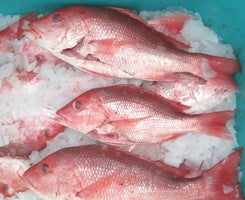By: Raul Garcia Rodriguez, WWF Spain, and Pam Ruiter, EDF EU Oceans
Raul Garcia is WWF Spain’s Fisheries Officer and Pam Ruiter is a Project Manager for EDF’s EU Oceans team based in Spain, where EDF and WWF are collaborating on a project working with coastal fisheries.
Shared by fishermen from Spain and Portugal, the octopus fishery in the waters off the coast of the Iberian Peninsula is economically important and complex. In late January, we attended the International Forum on Octopus Management in the Iberian Peninsula held in Santiago de Compostela, Spain to discuss management challenges in the fishery.
The forum was organised by WWF Spain, WWF UK and the EU GAP2 project, and included a group of 70 stakeholders including members of the fishing sector, management and civil society from across Spain, as well as representatives from Portugal. Read More













